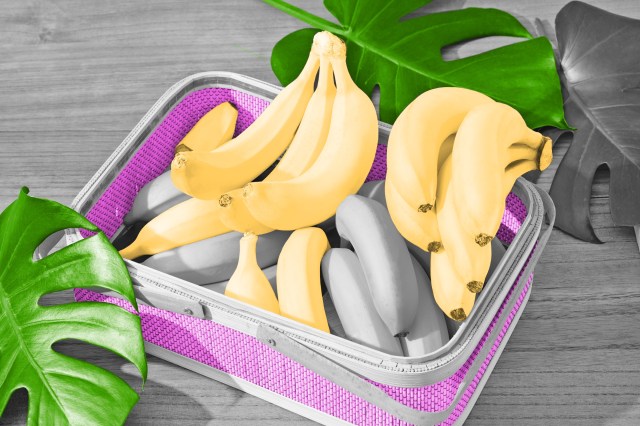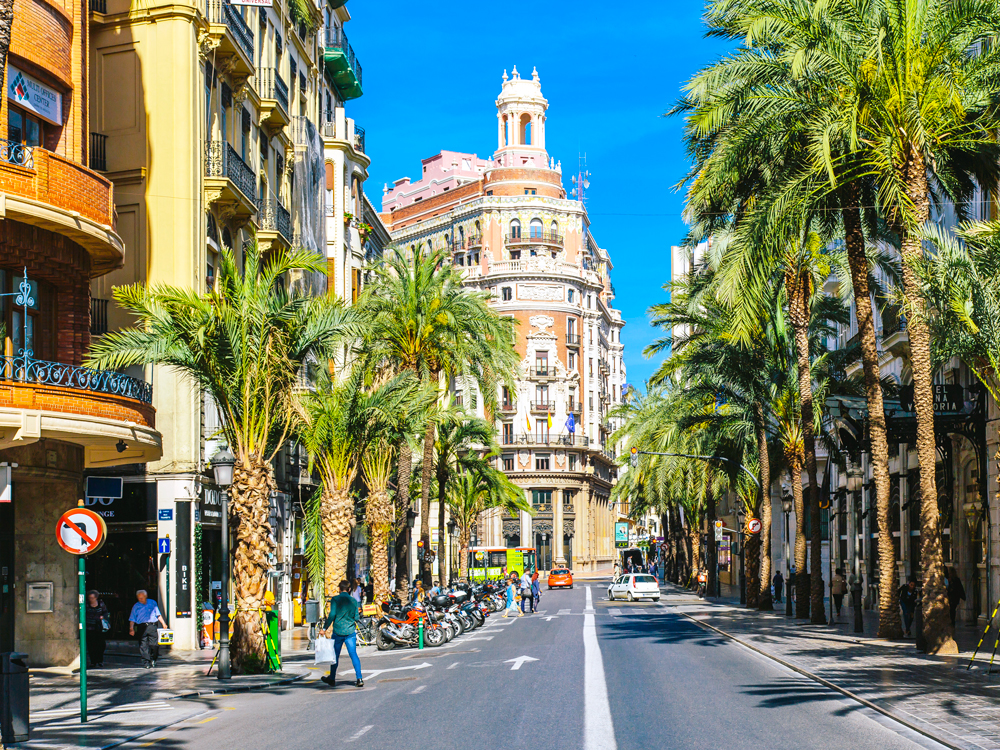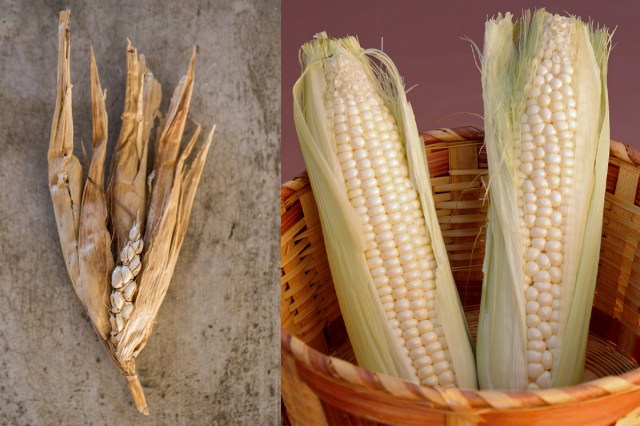
Corn
Of all the common fruits and vegetables, corn has possibly undergone the most dramatic transformation. It evolved from a wild grass called teosinte, and while the two plants are surprisingly alike at the DNA level, they are very different in terms of their plant architecture.
Teosinte is a bushier, branching grass with small, inconspicuous seed spikes holding just 10 grains each, with its kernels encased in hard, dark shells. This is a far cry from modern corn (also considered a member of the grass family), with its erect stem and ears and succulent cobs that bear several hundred grains.
The history of modern-day corn stretches back as far as the dawn of agriculture itself. Some 10,000 years ago, ancient farmers in what is now Mexico began selecting seeds to plant from the largest, most productive, or tastiest corn specimens. Thus began the process of selective breeding, one harvest after another, which eventually led to the corn cobs we know and love today.
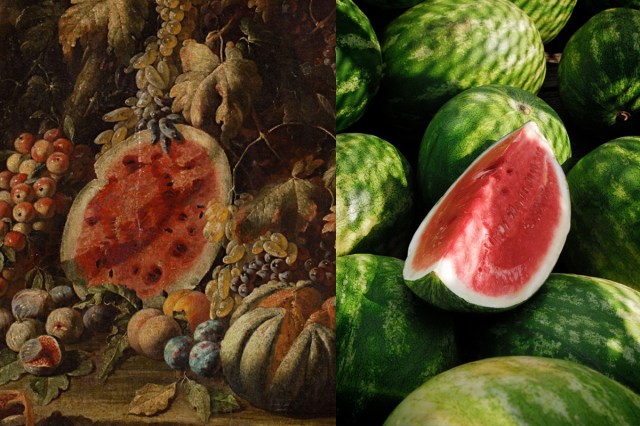
Watermelons
People have been eating watermelon for millennia, but it didn’t always look or taste the same as it does today. Initially, the fruit was hard and unappetizing, tasting either bitter or bland — a far cry from the sweet, juicy fruit we enjoy now. Watermelon seeds have been discovered in Egyptian tombs built more than 4,000 years ago, but back then the fruit was likely stored for its water content rather than its taste; it was meant to provide the deceased with hydration on their journey to the afterlife.
After centuries of selective breeding, farmers gradually developed varieties with sweeter flesh, more water content, and the characteristic red color we associate with ripe watermelons (which is caused by the pigment lycopene and is closely tied to the fruit’s sweetness). But even when watermelons arrived in European gardens and markets around 1600, they still didn’t look the same as today. One way we know this is through artistic representations of fruit, such as Giovanni Stanchi’s painting from the 17th century, which clearly displays watermelons with a noticeably different internal color and structure to those we now buy at the supermarket.
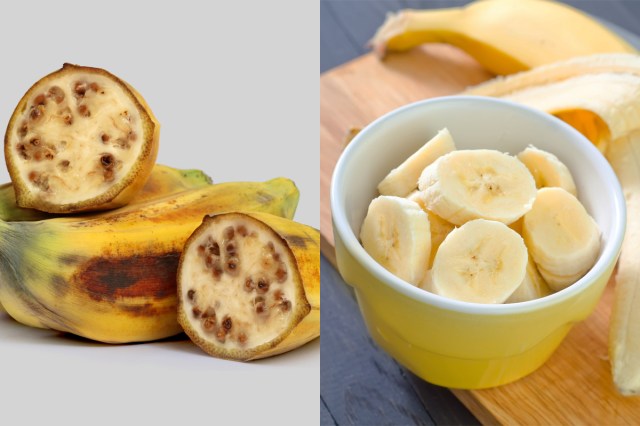
Bananas
Bananas are one of the most widely grown and consumed fruits in the world, but they underwent quite a makeover before achieving their current popularity. The wild ancestors of modern, domesticated bananas were riddled with bullet-like seeds and contained very little edible fruit — barely recognizable when compared to the creamy, sweet bananas we eat today.
Banana domestication began some 7,000 years ago, first by crossbreeding wild species and then through careful selective breeding of domesticated crops. This eventually led to our modern bananas, which are almost all flesh and contain only residual seeds, rendering them sterile. In the case of the banana, the emphasis on sweetness and edibility exceeded — and eventually did away with — the domesticated fruit’s reproductive capability, requiring the fruits to now be primarily grown through asexual propagation methods.
More Interesting Reads
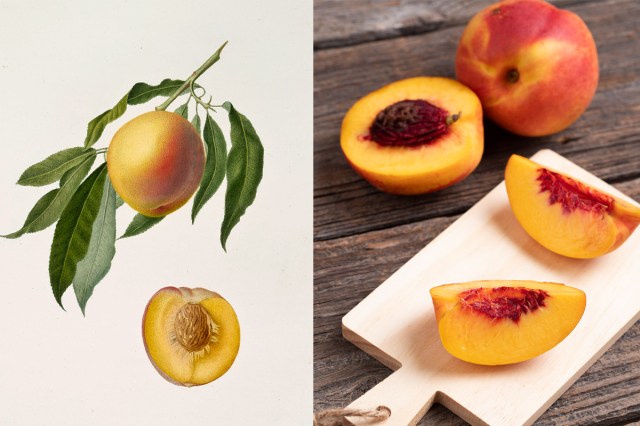
Peaches
Peaches have been cultivated for thousands of years, with evidence suggesting domestication of the fruit occurred as early as 6000 BCE in China’s Zhejiang province. But these were not the large, delicate, sweet, juicy peaches we know today.
In fact, we don’t know what the original wild peaches looked like, and for good reason: Fossil evidence shows that wild peaches have been evolving in China since long before there was even a human presence in the region, much less agriculture. But we do know that the earliest cultivated peaches were much smaller than those we eat today, with a more acidic taste and a greenish-cream color.
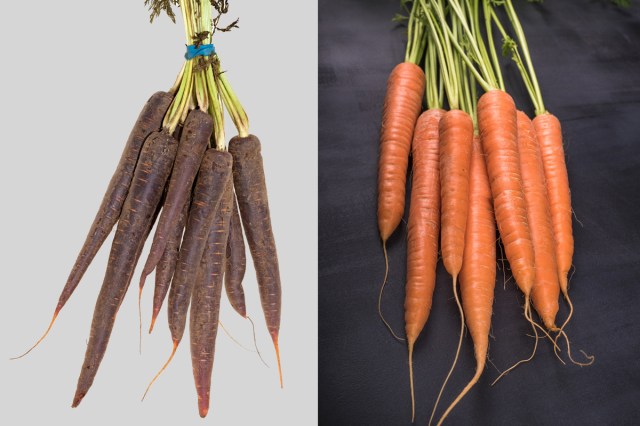
Carrots
If you ask someone to name something orange, a common answer would be “a carrot.” But carrots acquired their characteristic orangeness a long time after they were first cultivated.
Carrot domestication began more than 1,000 years ago in ancient Persia, at which point they were purple or yellow and likely had tough, bitter, and spindly forked roots. It was only during the 17th century that farmers in Holland began doing some crafty selective crossbreeding that would ultimately give carrots their now-standard orange color.

